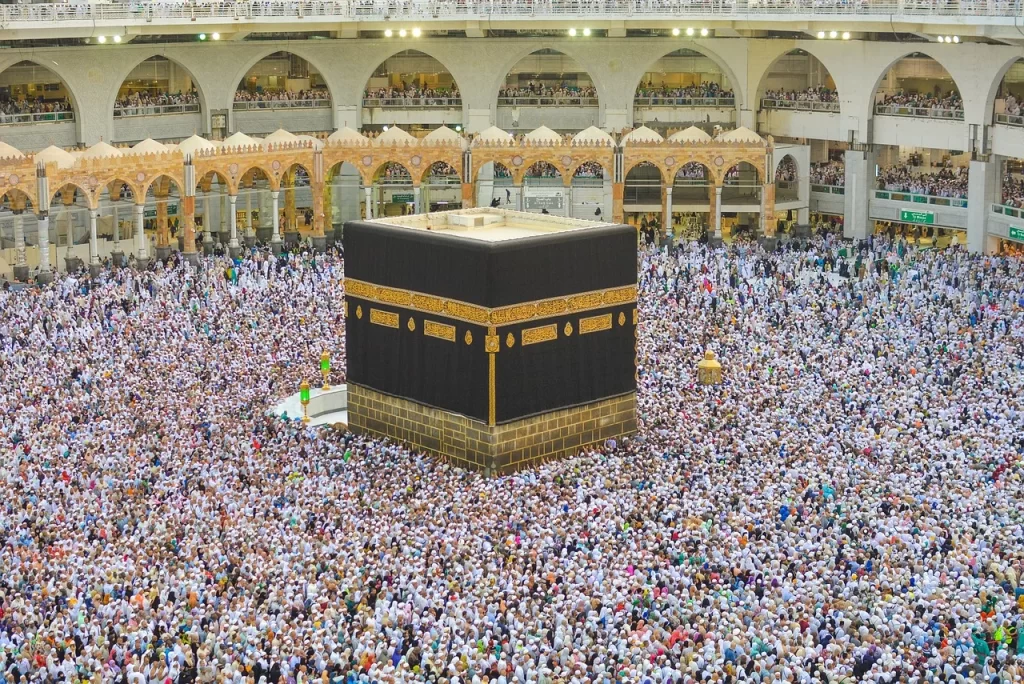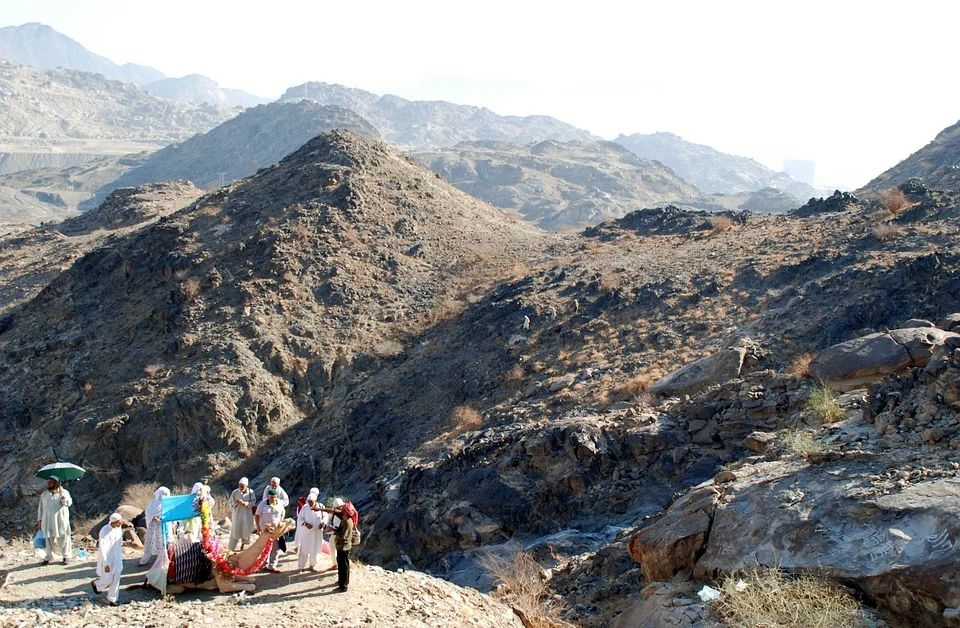Note: This article is based on the religious pilgrimage of Hajj 2023, its significance, preparation, rituals, challenges, rewards, and the experience of undertaking Hajj in the modern age.
Introduction
Hajj, the annual Islamic pilgrimage to Mecca, Saudi Arabia, is a spiritual journey that holds immense significance for Muslims worldwide. It is an obligation for every physically and financially capable Muslim to perform Hajj at least once in their lifetime. This article delves into the details of Hajj, its rituals, the challenges and rewards associated with it, and the experience of undertaking Hajj in the modern age.
Most Viewed: Hajj 2023 Dates: Everything You Need to Know
What is Hajj?
Hajj is the fifth pillar of Islam and is considered one of the largest gatherings of people in the world. It takes place during the Islamic month of Dhul Hijjah and involves a series of prescribed rituals. Muslims from different corners of the globe converge on Mecca to fulfill their religious duty and seek closeness to Allah.
Significance of Hajj
Hajj holds immense religious and spiritual significance for Muslims. It is believed that Hajj is a journey of self-discovery, repentance, and seeking forgiveness. It symbolizes unity and equality, as people from all walks of life come together as equals before Allah. Hajj is a reminder of the Day of Judgment, where all individuals will stand before Allah without any worldly distinctions.
Trending:How to Get a Saudi Visit Visa for Indian

Preparing for Hajj
Choosing a Hajj package 2023
One of the initial steps in preparing for Hajj is choosing a suitable Hajj package. There are various options available, ranging from basic to luxury packages. Factors to consider include accommodation, transportation, and the level of support provided by the travel agency.
Obtaining necessary documents
Before embarking on the journey, pilgrims must ensure they have all the necessary documents, such as a valid passport, visa, and health certificates. It is essential to familiarize oneself with the specific requirements of the Saudi Arabian government and follow the guidelines accordingly.
Physical and spiritual preparation
Undertaking Hajj requires physical and spiritual preparation. Physical preparation involves maintaining good health, undertaking regular exercise, and ensuring appropriate vaccinations. Spiritual preparation entails increasing one’s knowledge of the rituals and engaging in acts of worship, such as fasting and prayer.
The Rituals of Hajj
Hajj consists of several key rituals, each holding its own significance. These rituals include:
Ihram: Entering the state of purity
Upon reaching the designated boundary known as Miqat, pilgrims enter the state of Ihram. This involves wearing simple, white garments for men and modest attire for women. Ihram signifies the abandonment of worldly distractions and the focus on spiritual devotion.
Tawaf: Circumambulation of the Kaaba
The Kaaba, located in the center of the Masjid al-Haram, is Islam’s holiest site. Pilgrims perform Tawaf, circling the Kaaba seven times in a counterclockwise direction, expressing their reverence and unity with the Muslim ummah.
Sa’i: Walking between Safa and Marwa
Pilgrims reenact the journey of Hagar, the wife of Prophet Ibrahim, by walking between the hills of Safa and Marwa. This act symbolizes Hagar’s search for water for her son Ismail and represents the importance of perseverance and trust in Allah’s provision.
Mina: Stay in the tent city
Pilgrims spend several days in Mina, a tent city located near Mecca. Here, they engage in prayers, reflection, and remembrance of Allah, strengthening their bond with fellow pilgrims.
Arafat: The pinnacle of Hajj
The day of Arafat is considered the most important day of Hajj. Pilgrims gather on the plains of Arafat, supplicating to Allah, seeking forgiveness, and engaging in deep spiritual reflection. It is believed that supplications made on this day are accepted by Allah.
Muzdalifah: Collecting pebbles for the symbolic stoning of Satan
After sunset, pilgrims proceed to Muzdalifah, where they collect pebbles for the symbolic stoning of Satan. This act symbolizes the rejection of evil temptations and reaffirms one’s commitment to follow the path of righteousness.
Stoning of Satan: Rejecting evil temptations
Pilgrims perform the ritual of stoning, where they throw pebbles at three pillars representing Satan. This ritual symbolizes the rejection of evil and reminds pilgrims of the tests and trials faced by Prophet Ibrahim.
Farewell Tawaf: Final circumambulation
Before leaving Mecca, pilgrims perform a farewell Tawaf, circling the Kaaba one last time as an expression of gratitude and bidding farewell to the holy city.
Challenges and Rewards of Hajj 2023
Undertaking Hajj comes with its own set of challenges, both physical and emotional. The physical challenges include long hours of walking, crowded spaces, and the possibility of extreme weather conditions. However, the rewards associated with Hajj are abundant.
Hajj in the Modern Age
In the modern age, the experience of Hajj 2023 has been enhanced by technological advancements and improved infrastructure. Safety and security measures have been implemented to ensure the well-being of pilgrims. Accommodation options have expanded, ranging from hotels to air-conditioned tents. Transportation facilities, such as buses and trains, have made the movement of pilgrims more efficient.
Conclusion
Hajj is a profound spiritual journey that holds immense significance for Muslims around the world. It is an opportunity for self-reflection, repentance, and seeking closeness to Allah. Undertaking Hajj requires careful preparation, both physically and spiritually. The rituals of Hajj symbolize unity, equality, and the rejection of evil. Despite the challenges, the rewards and personal growth experienced during Hajj make it a transformative experience for pilgrims.
FAQs
- Who is obligated to perform Hajj?
- Hajj is an obligation for every physically and financially capable Muslim.
- How often can one perform Hajj?
- Hajj is recommended to be performed once in a lifetime, but individuals can perform it multiple times if they wish.
- What is the significance of the Kaaba in Hajj?
- The Kaaba is the holiest site in Islam and represents the unity of Muslims around the world.
- Is Hajj only about rituals or does it have deeper meanings?
- Hajj is not merely a series of rituals but a profound spiritual journey that encompasses repentance, self-reflection, and seeking closeness to Allah.
- How has technology improved the experience of Hajj 2023?
- Technology has improved safety measures, infrastructure, and transportation facilities, making the experience of Hajj more convenient for pilgrims.

